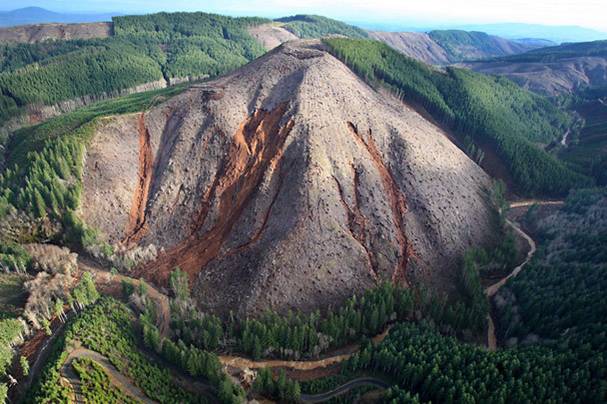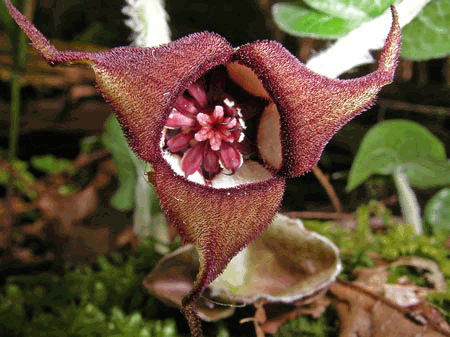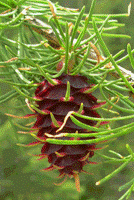 tainable
Forestry for the 21st century
tainable
Forestry for the 21st century 
Second Summer Session, Classes July 28- August 29, 2008
The Evergreen State College 5 credits Upper Division / 4 credits Graduate (MES elective)
Instructor: Richard Bigley Ph. D
Sustainable Forestry for the 21st century (Second summer session 2008) is an introduction to forestry, forest management and the forces of change. Forest management in the Pacific Northwest is (and has been for over a decade) undergoing a striking transformation in response to diverse and often conflicting stimuli. On the business side, forestry is facing increased demand for wood products at a time when globalization has increased market competitiveness and amplitude in the cyclical economic characteristics of prices. Simultaneously, as a manager of lands, the forest industry is retooling to meet sophisticated management challenges and to secure good and services, and public trust. Public scrutiny of forestry (at least in the Pacific NW) now has increased attention to ecological services associated with the environment such as biodiversity, carbon storage and water. Moves toward sustainability in forestry practices meet both long-term forest products needs and the expectations of the public. Forest science has an important role in shaping the forestry of tomorrow. Core reading is from the literature and provided as PDF.
Sustainable forest management has become a guiding principle for many land management organizations. The course explores the diverse dimensions of sustainable forestry and provides an introduction to forestry and the methods being employed to restore forested ecosystems in the Pacific Northwest towards the goal of sustainability. I am particularly interested in motivations, methods and approached to restore older forest stand structures and habitats to riparian ecosystems. To achieve the ecological aspects of sustainability, managers have to face complex ecological challenges such as altered fire and disturbance regimes, changing global environmental regimes, the introduction of exotics and landscape fragmentation.
The class will be organized around four themes the motivation and basis of change, new directions for management and society. Read more...
Class Format, Schedule and FeesThis upper division science course and MES elective. There will two weekly class meetings Tuesday and Thursday evenings from 6 to 8 for 5 weeks. There will be 2 field trips on Saturday Aug 9 and a 2-night field trip to eastern Washington leaving the afternoon of Friday Aug 23rd returning Sunday Aug 24th. The trip is to investigate management issues in the Cascades and dry mixed conifer forests of the Eastside. We will need to pay our own way for field trip transportation so we will camp and share cooking. There will be a $100 fee to cover van rental; the unused portion of these funds will be refunded at the end of the term. There is no text to purchase, but PDFs will need to be printed. I will post a detailed class schedule near the beginning of class.
Prerequisites: Introductory Biology or Environmental
Studies or equivalent
Upper division Science Credit, Course number
40164, 5 undergraduate credits, Course number 401654, 4 graduate credits.
Required Fees: $100 for field trip expenses including van rentals
Non-Credit | Extended Education
Fee: $475, includes $100 for field trip expenses and van rentals
Prerequisites: Introductory Biology or Environmental Studies or equivalent
Course Number: E4008
This class explores the probable drivers of future developments in the practice of forestry in the Pacific Northwest and how these developments have influenced similar developments throughout the world. Four themes will be explored in the class:
Forestry’s Revolution
For the last 10 to 15 years we have been in a period of unprecedented
public concern over the alteration and loss of forests and the accelerating
rate of loss of plant and animal species native to forest ecosystems.
Over this period concern has grown from society and academia in the United
States and through out the world. The Pacific Northwest has been often
the center of this revolution owing to our relatively high forested area
much of which is managed and proportion of remaining original forest.
Much of the vision and innovation toward sustainable forestry has come
from our region and Europe. We will discuss emerging trends in the tropics
and other temperate forests.
The practice of forestry in the United States is currently undergoing the most profound and rapid change since its establishment a century ago. The evolution from sustained-yield man¬agement of a relatively small number of commercial tree species to the protection and sustainable management of forest ecosystems is changing some of the fundamental premises of forest management. Like sustained ¬yield forest management, which was a radical departure from current practice when it was introduced near the turn of the century, the protection and sustainable management of forest ecosystems is increasingly the stated goal of forest resource management in the twenty-first century. Supporting this transition will be a challenge for forest science and society alike.
Forest Science as the foundation of sustainability
Forest science has played a critical role in the curious process that
has resulted in a slow shift toward ecologically based forest management
regimes reflects expanding mix of values that the public attaches to its
forest resources. A steadily growing list of threatened and endangered
forest-dwelling species, endangered salmon runs and other declining fisheries,
and degraded water quality is a troublesome indicator of the status of
forest ecosystems and their capacity to meet long-term human needs. The
various sectors of forestry have responded in different ways, they all
are struggling to define and implement a various visions of sustainable
forestry. We will use nutrient cycling and models of sustainability to
illustrate the interdependence of changes in forestry practices and the
advancement of forest science.
The Role of Restoration in Sustainability
Over the past 100 years forestry has left a considerable foot print on
the PNW. Older forests have been replaced with younger forests; replacing
complex, uneven-aged stands with simplified, even-aged stands; and reducing
large forest patches to ever smaller forest patches. To reverse these
past trajectories is to move toward sustaining forests. Many organizations
are conserving remaining older forests, restoring complex stand structures,
growing in larger and more well-connected patches of structurally complex
stands, reevaluation the role of fire and other disturbance, and reducing
roads. It is anticipated these transitions will allow the maintenance
and recovery of biodiversity and the restoration of forests where the
ecological potential many have been degraded. A field trip will provide
hand-on experience with the tools used to restore complex forest structures
in managed forests.
The Societal role in forestry will increase
With 6.6 billion people on earth (and growing), conflicts between utilization
of forest resources and conservation will need to be redefined. By the time
a forest started today would likely function as older forest habitat (in
about 150 years) there will be an estimated 9.7 billion people on earth.
The need for land management and sustainability simply is no choice. The
most important question to ask with respect to sustainability is about making
choices: What do we wish to sustain and why? What goals do we wish to attain
with our land management programs, and what values are behind those goals?
These fundamental questions must be answered before we can define sustainable
forestry. Today, society demands more emphasis has been placed on biodiversity
and the hydrological, recreational, and climatic values of forests than
at any time. We will explore how this has played out in the Pacific Northwest
and other parts of the world that are in different phases of forestry development.
I am passionate about forests. My current work focuses on the restoration of riparian forests to older forest conditions in western Washington, and the ecology and management of headwater streams and wetlands. I work for the Washington State Department of Natural Resources (WADNR) in Olympia, Washington, and am the State Lands Habitat Conservation Plan (HCP) Research and Adaptive Management Team Leader. Over the last 18 years with the WADNR, I have been one of the architects for the department’s State Lands HCP Effectiveness Monitoring and Adaptive Management programs. I have also served as team leader for both the forest ecology and wildlife science teams. Before joining WADNR, I worked as an ecologist for the Forest Service PNW Experiment Station.
I earned my Ph. D. in Forest Ecology and Silviculture from the University of British Columbia in 1988. Since 1994 I have been an Affiliate Assistant Professor at the Univ. of Washington, College of Forestry. In 2004, I was a member of the northern spotted owl “5-year review” panel. The Panel was charged with the first comprehensive evaluation of the scientific information on the northern spotted owl since the time of listing of the as threatened under the Endangered Species Act (ESA).
For more InformationFor more information about the
class contact
(E-mail distorted to reduce spam. You'll need to edit it.)





